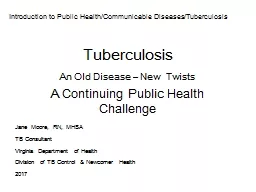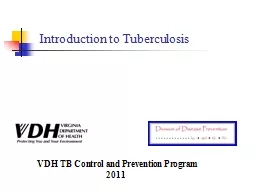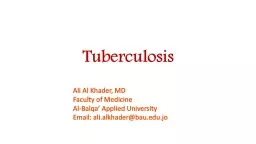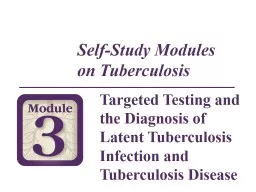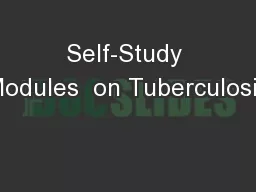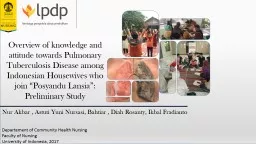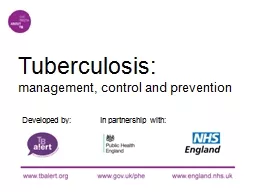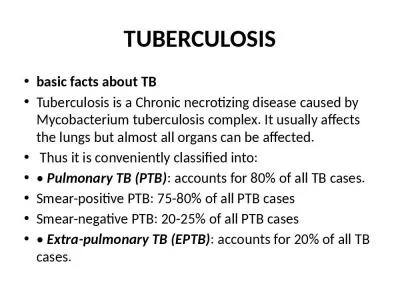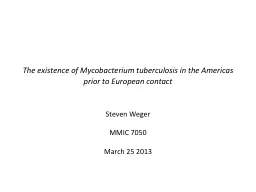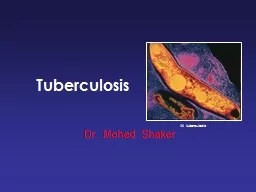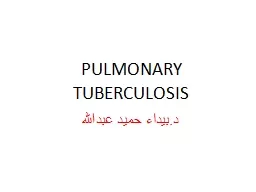PPT-Tuberculosis An Old Disease
Author : calandra-battersby | Published Date : 2018-10-30
New Twists A Continuing Public Health Challenge Jane Moore RN MHSA TB Consultant Virginia Department of Health Division of TB Control amp Newcomer Health 2017
Presentation Embed Code
Download Presentation
Download Presentation The PPT/PDF document "Tuberculosis An Old Disease" is the property of its rightful owner. Permission is granted to download and print the materials on this website for personal, non-commercial use only, and to display it on your personal computer provided you do not modify the materials and that you retain all copyright notices contained in the materials. By downloading content from our website, you accept the terms of this agreement.
Tuberculosis An Old Disease: Transcript
Download Rules Of Document
"Tuberculosis An Old Disease"The content belongs to its owner. You may download and print it for personal use, without modification, and keep all copyright notices. By downloading, you agree to these terms.
Related Documents

